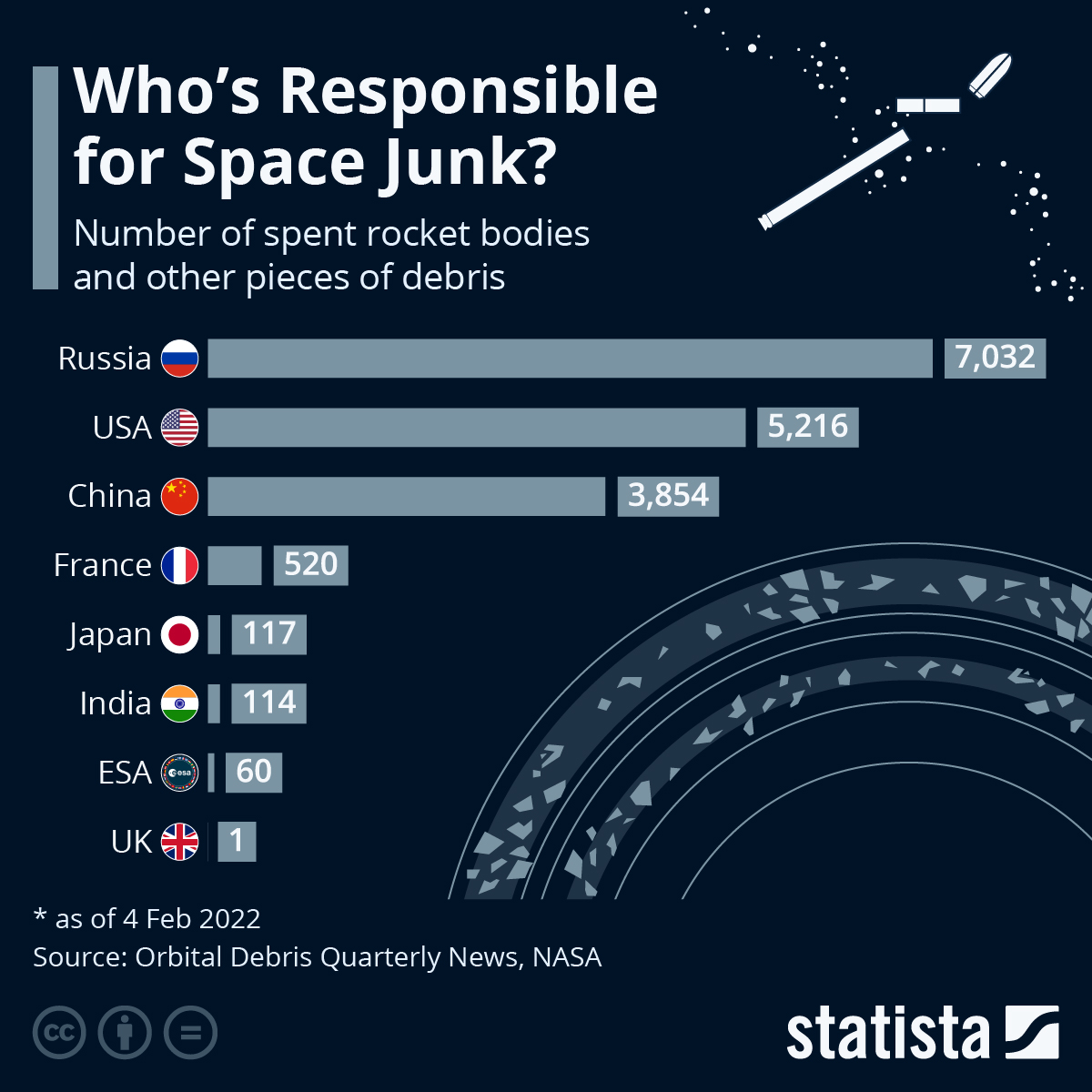Human beings in different ways have always harmed and
polluted the land but, it turns out that it is not just the land that is being
damaged, the space is also being polluted now. Uncountable pieces of debris
that comes from broken down satellites, rocket boosters and weapon tests that
have been launched over the past years have now gotten stuck in orbit. Due to
this, there is clutter in the orbit which is a problem for the active
satellites needed now for monitoring the Earth. The other harm is that there is
a release of harmful chemicals into the atmosphere as they burn up on re-entry,
using up the ozone layer, as well as potentially creating problems for future
launches and space exploration.
Three countries are majorly responsible for the space junk. These are Russia, the United States and China. Russia blew up one of its own satellites using an anti-satellite (ASAT) weapon that created thousands of pieces in of debris in the space due to which the International Space Station was at a risk. According to an evaluation by The Secure World Foundation, at least 16 debris-creating ASAT weapons tests have been carried out till now, and the one considered to be potentially the most damaging one is the one carried out by China in 2007, as one of the country’s own satellites downed, creating an estimated 3,000 pieces of debris. However, the first ASAT test was created by the U.S. back in 1950’s and according to Data Center Dynamics, it is responsible for other three debris-creating tests; two in the mid-1980s and one in 2008.
Active debris removal faces several technological,
geopolitical and economic challenges, according to the OECD. The manufacturing
and launching of vehicles used for debris removal is quite costly and by chance
if anything goes wrong, there is a risk of creating further debris. According
to the OECD, the possible solutions for this problem include ground or space
based lasers to bump objects out of the way and the possibility to create an
“artificial atmosphere” to divert its orbit. The analysts of the organization determine:
“All legal, technological and economic hurdles aside, these approaches depend
on a much more accurate capability of space situational awareness and space
tracking than exists today.”
Clearly this problem of space debris will need to be solved
soon as corporations such as SpaceX and Boeing Co. get set to launch some
65,000 spacecraft into low-Earth orbit, increasing the probability of more
collisions and even further debris in the future.
Infographic by: statista


